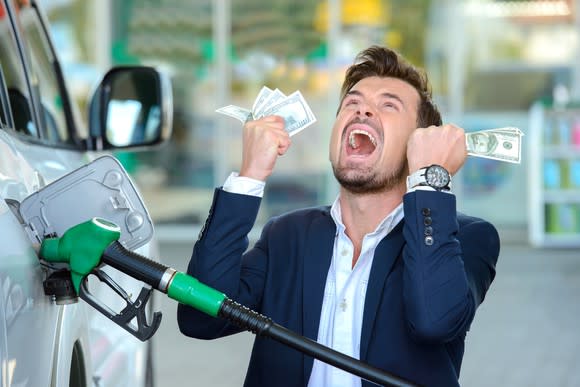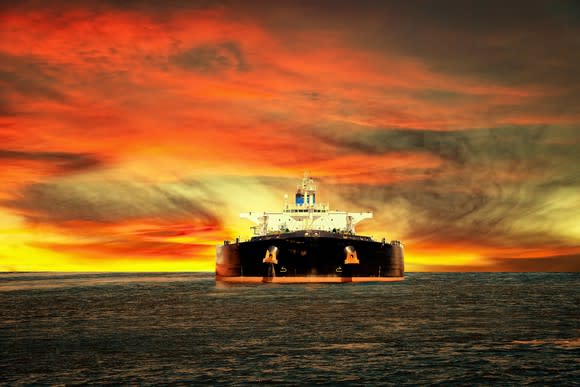Gas Prices: Get Ready to Pay Even More at the Pump
Gasoline demand typically declines during the winter months because drivers tend to tap the brakes on unnecessary travel. However, that hasn't been the case this year as demand for gasoline hit a record level this month. In fact, it has been at "levels typical of summer months, not the first quarter of a year," according to the U.S. Energy Information Administration (EIA), which tracks the country's energy trends. That's one of the many factors that has driven the average price of gas in the country up to $2.55 per gallon, which is $0.26 per gallon above last year's level, according to AAA.
That rise, however, appears only to be the beginning. "As demand continues to recover from the winter blues and the transition to summer gasoline kicks into high gear...[spring gas prices could]... come in some 10%-25% higher than a year ago," according to GasBuddy. Though, that's assuming the price of oil doesn't head any higher after rebounding more than 25% over the past year.

It won't get this bad just yet. Image source: Getty Images.
What's driving this demand?
Gasoline demand in the U.S. tipped the scale at 9.6 million barrels per day (BPD) earlier this month, which is a level not seen since last August. While a strong U.S. economy has increased consumer confidence and driven down the unemployment rate, putting more cars on the road this year, red-hot global demand is having a notable impact on the U.S. gasoline market. That's because the country is sending an increasing supply of gasoline to more lucrative overseas markets, with AAA noting that a major factor fueling record demand this month has been rising export volumes, which continue to "trend high."
That plays right into the hands of large refiners like Valero (NYSE: VLO), which has invested heavily in building incremental export capacity in recent years. While Valero's gasoline export volumes dipped to an average of 110,000 BPD last year due to the impact of several hurricanes, the company has the capacity to export 274,000 BPD of gas, which has likely come in handy this year due to healthy global demand growth. Fellow refiner Phillips 66 (NYSE: PSX), likewise, has invested to increase its export capacity in recent years. As a result, Phillips 66 was able to export a record 236,000 BPD of refined products in last year's fourth quarter due to continued strong demand from Latin America. Meanwhile, the company recently increased the total petroleum product export capacity at its Beaumont Terminal to 600,000 BPD by completing a major expansion. This increased ability to export is putting some upward pressure on gasoline prices right as the country heads into the summer driving season, which typically sends the price up each year.

Image source: Getty Images.
The other driver of gas prices
Healthy demand for gasoline, however, isn't the only factor causing drivers to pay more at the pump in 2018. The other is the price of oil, which makes up the majority of the per-gallon price. As noted earlier, crude is up more than 25% in the past year, due mainly to the work of OPEC and Russia, which have coordinated their efforts to stabilize the oil market and improve pricing. In fact, that strategy has worked much better than expected since crude has stayed in the $60s this year, which is about $10 per barrel above the anticipated level.
It's possible that crude could continue rising this year if demand remains robust. The only reason it hasn't gone even higher is that oil companies in the U.S. are drilling new wells at a brisk pace to increase the country's output. However, there's a growing concern that an unexpected supply disruption could send shockwaves through the oil market and drive crude even higher. If that happens, gas prices would likely follow its lead.
It was nice while it lasted
Prices at the pump are already higher than they were at this time last year due to rising demand and oil prices. Unfortunately, they appear likely to continue moving upward in the coming months as the summer driving season shifts demand into an even higher gear. Add in the potential for crude to keep rising, and filling up will likely pinch a bit more this year than it has in the recent past. That's why you might want to consider ways to relieve some of that pressure by looking into credit cards that offer the best rewards at the pump.
More From The Motley Fool
Matthew DiLallo owns shares of Phillips 66. The Motley Fool has no position in any of the stocks mentioned. The Motley Fool has a disclosure policy.
